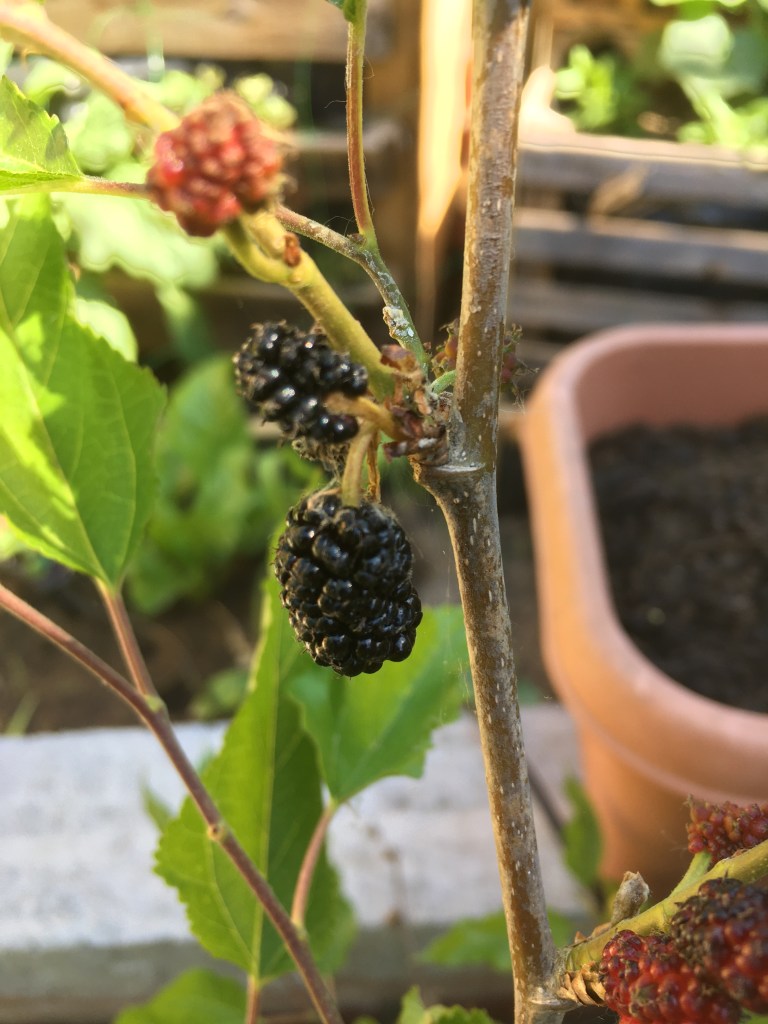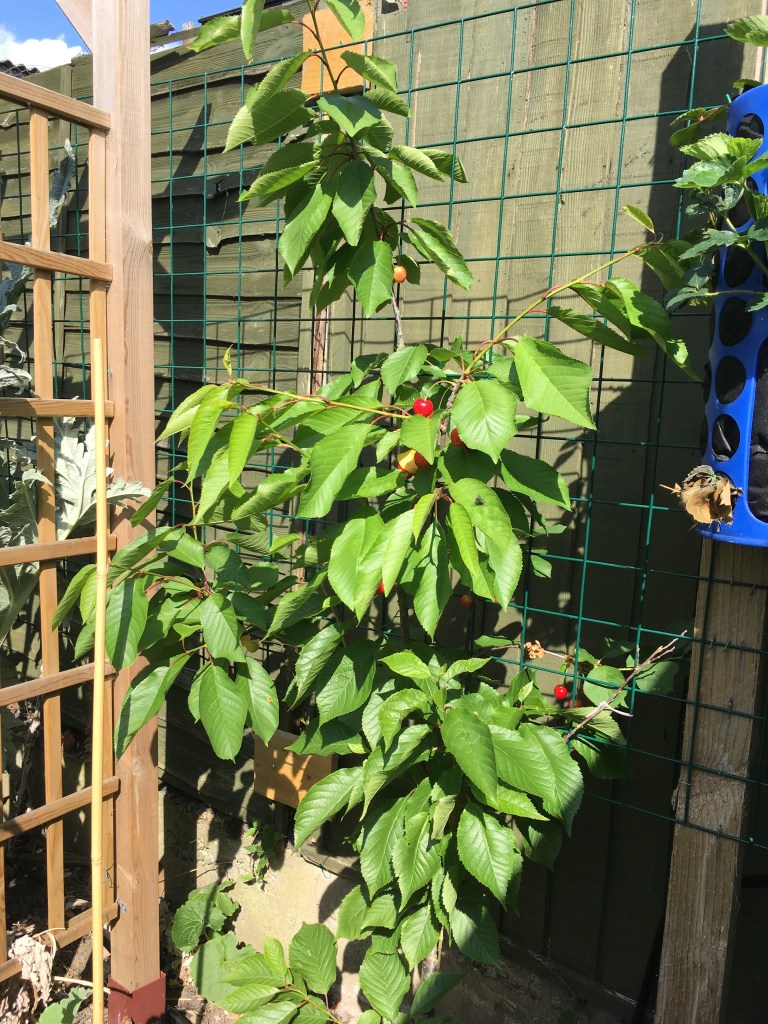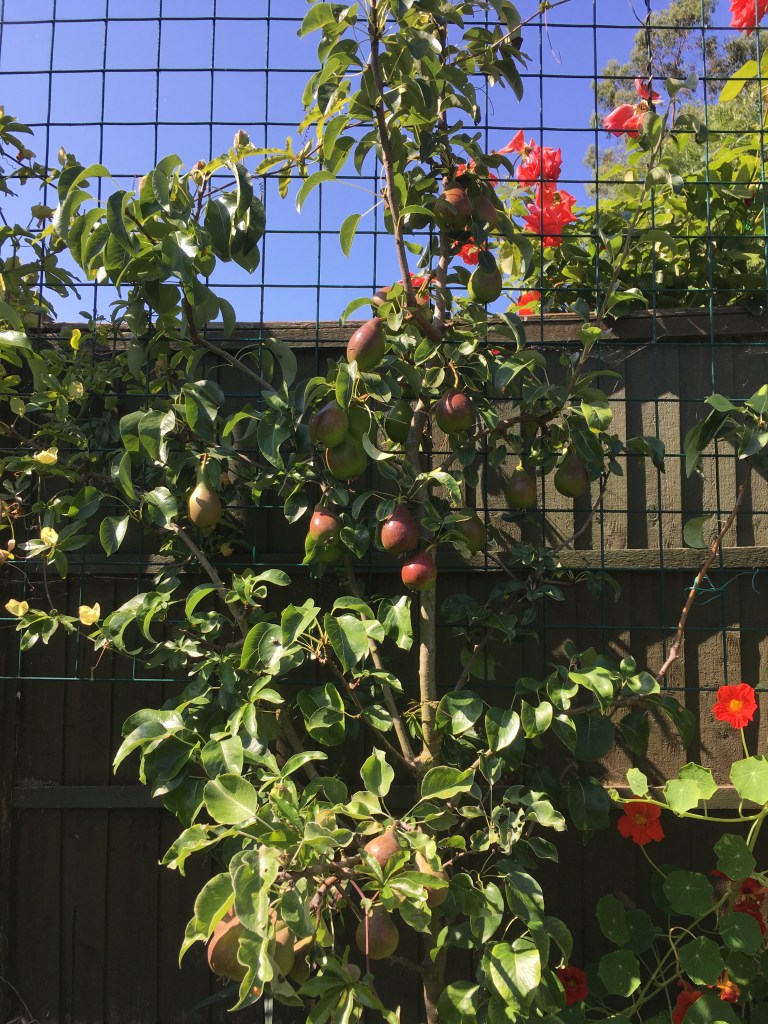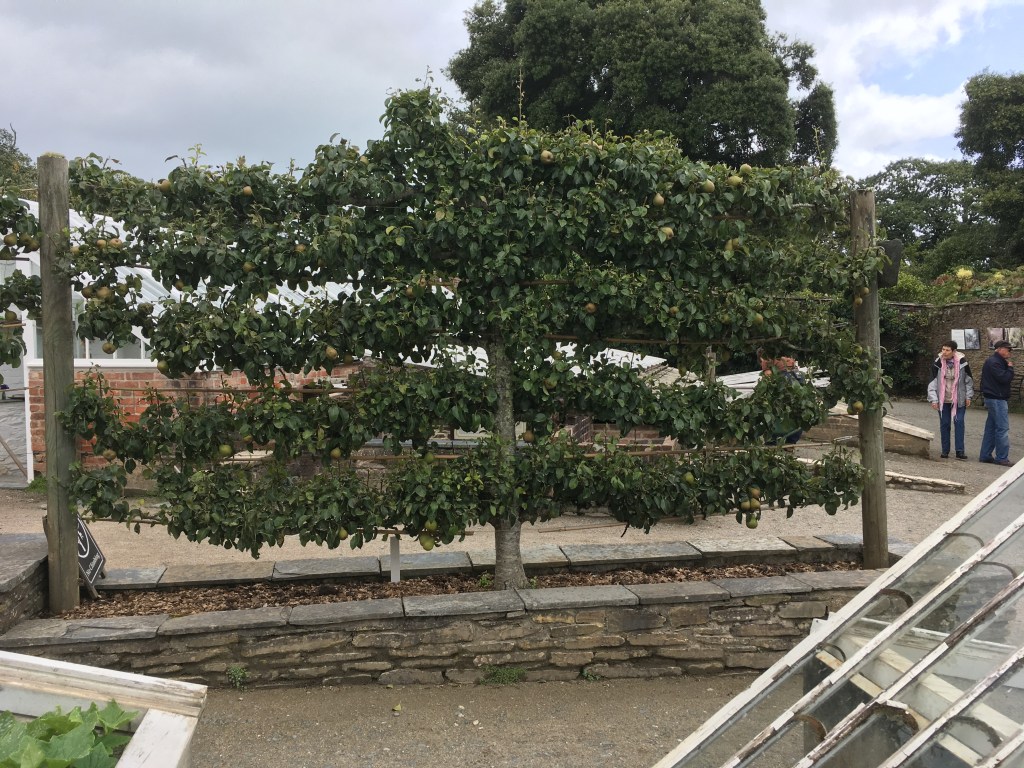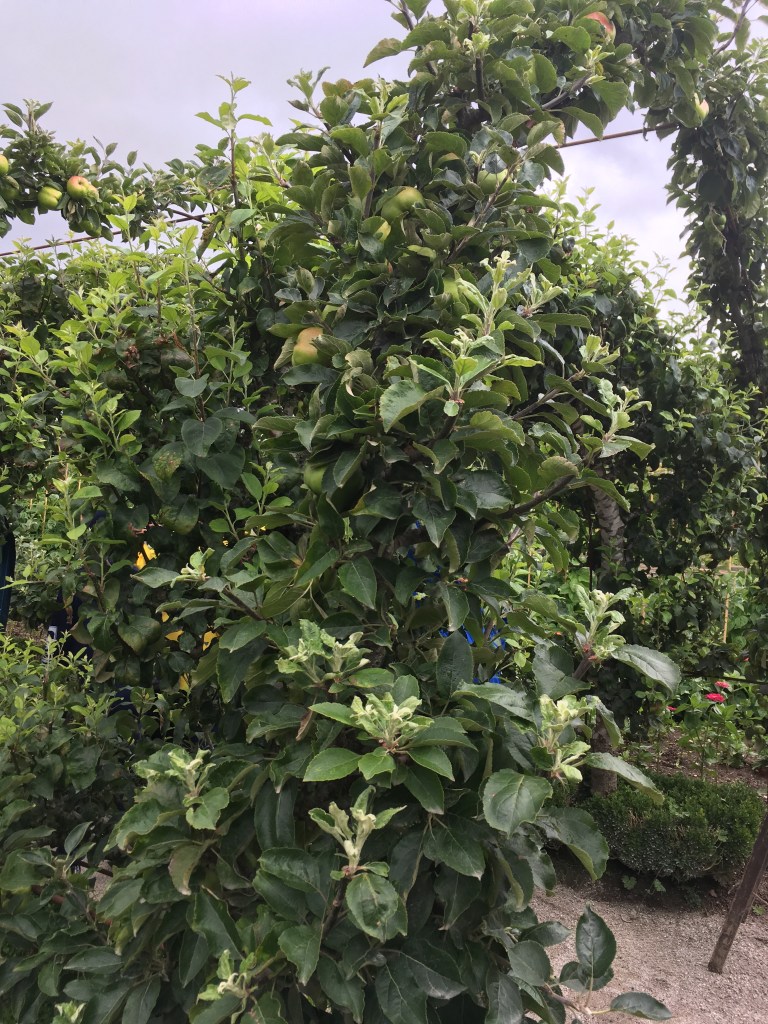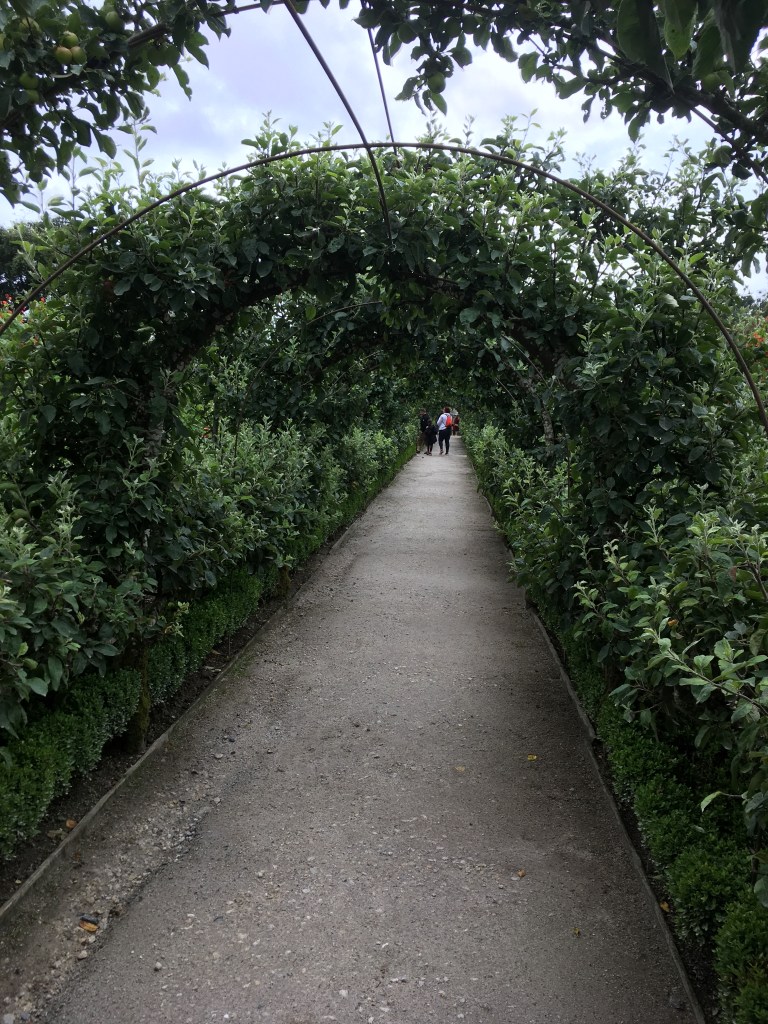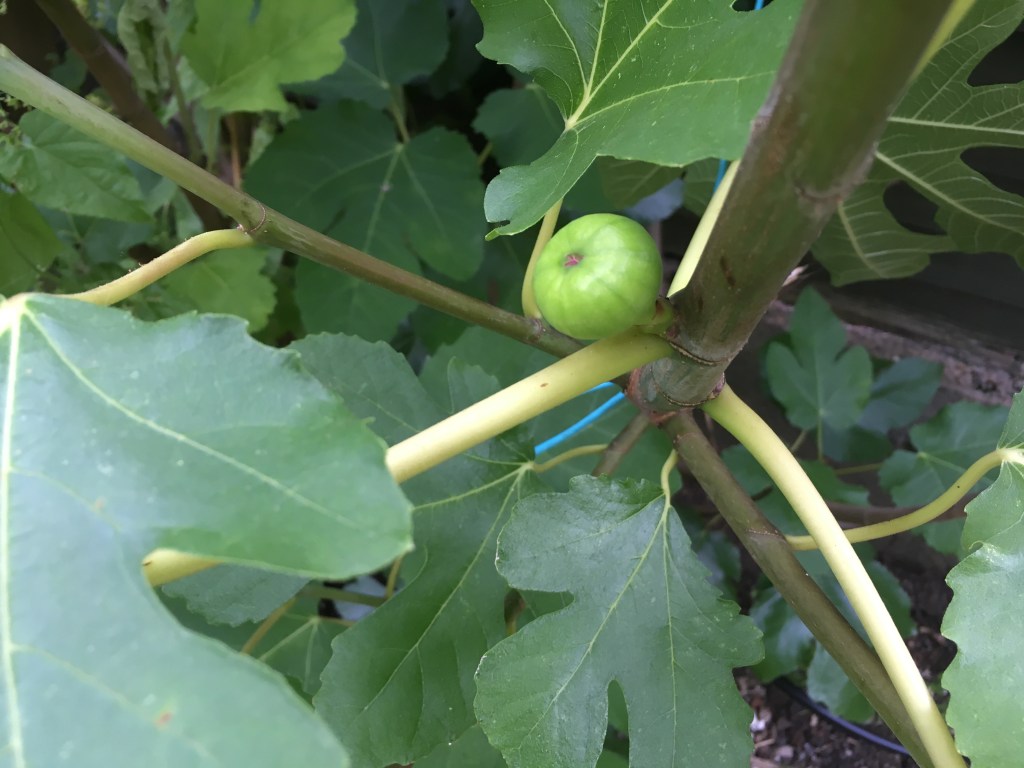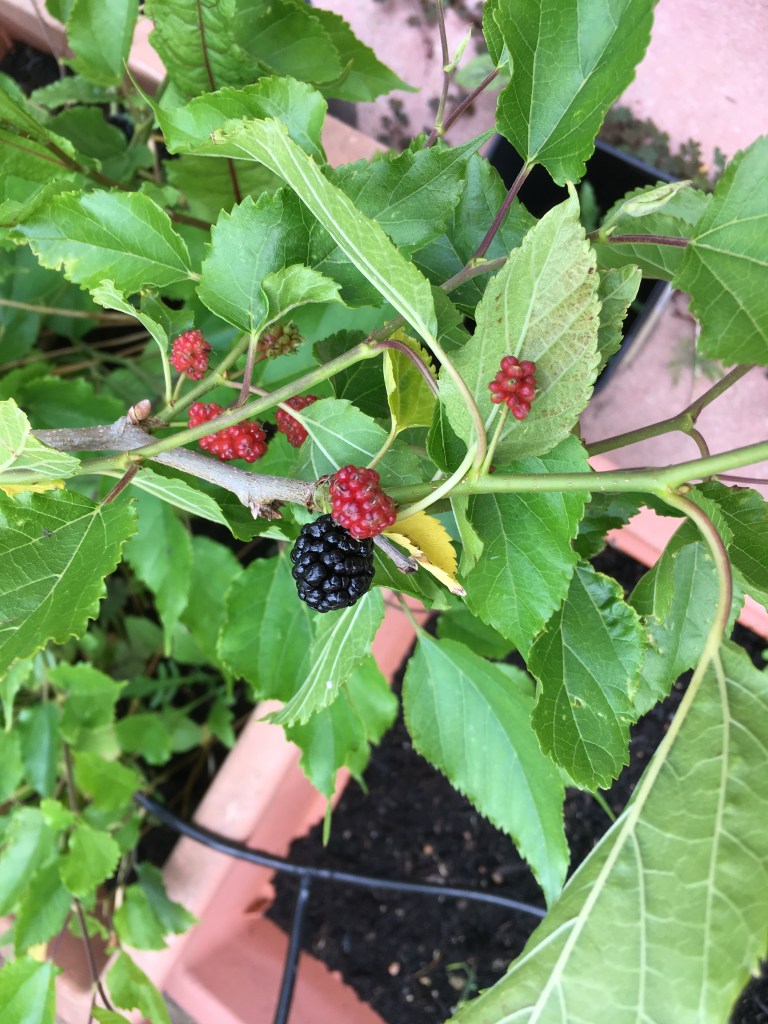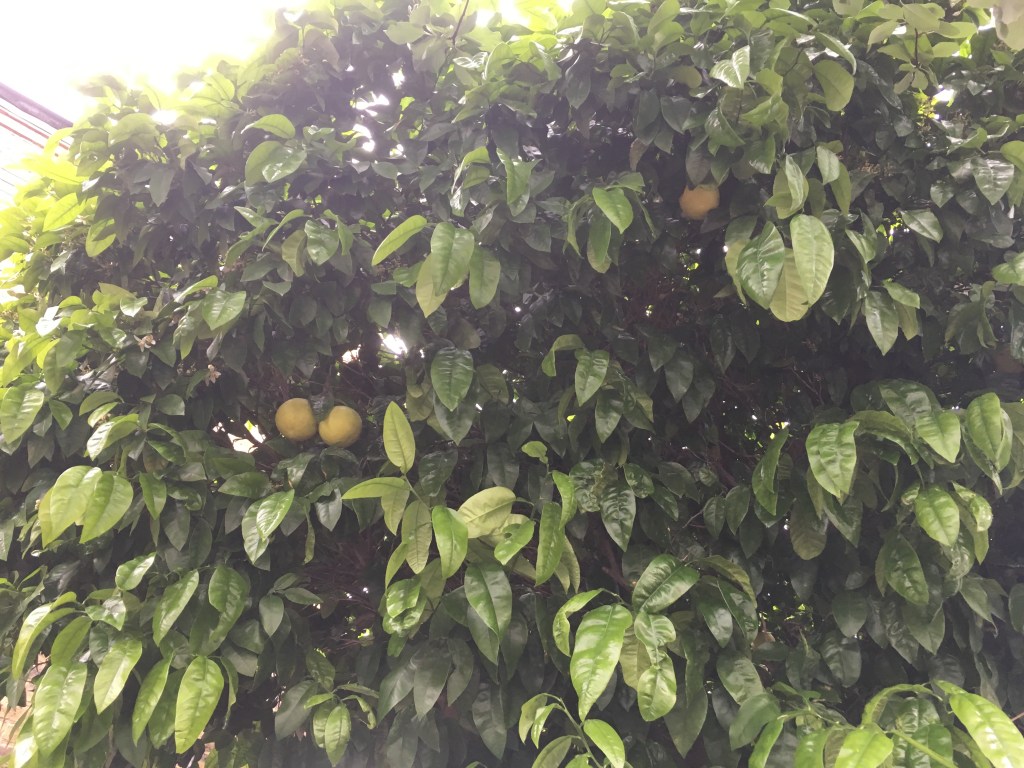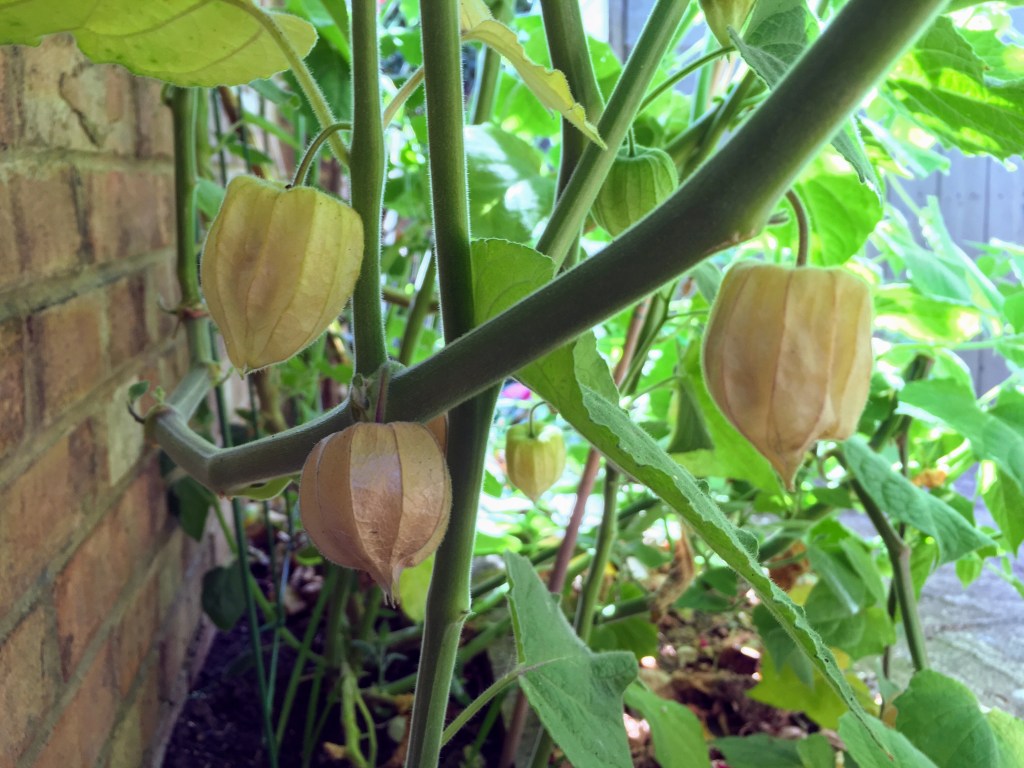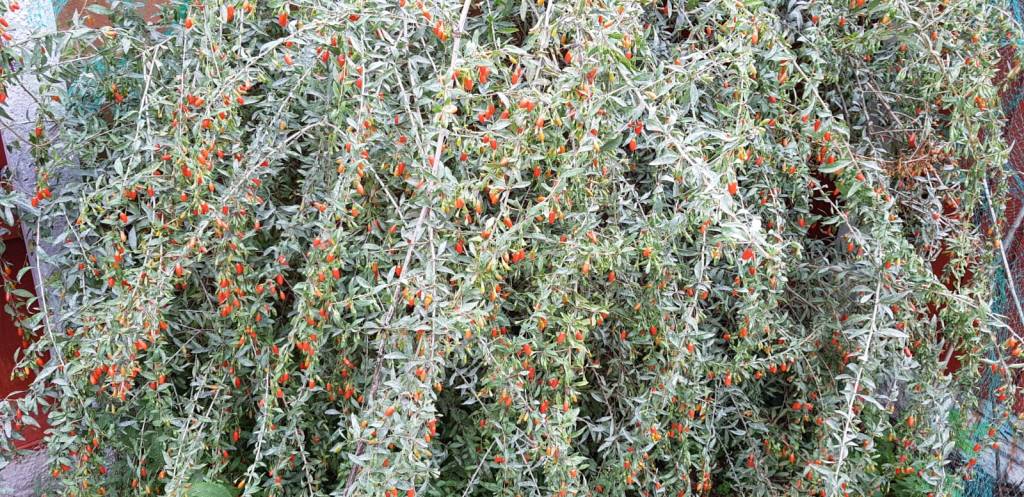Short version:
Mulberries are worth growing as they are one of the things that you can’t get in shops. They are less fussy about soil than raspberries and blueberries. They don’t need pruning the way blackberries and raspberries do. They taste like a cross between a grape and blackberry, but without the pips. The leaves can also be edible (but see warning at the end).
Mulberries are something that you either have to grow yourself or forage for. You’ll be hard pressed to find fresh mulberries in the shops. Ripe mulberries make a squidgy mess easily so they would never be suitable for transit or storage. Even underripe mulberries come apart easily.
I only have a limited experience with growing mulberries as I’ve only had my bushes for just over 2 years and both are a dwarf variety called Charlotte Russe, bought from the Suttons website. I have sadly read that this variety, despite winning awards, isn’t particularly great tasting. The best tasting ones must be amazing then. I like the ones we have anyway, and they’ve received the seal of approval from my little fussy eater.
Mulberries come in red, white and black. We have the black ones (M. nigra). The black mulberries are supposed to taste the best and are they are the hardiest. The white mulberries are the ones that are often dried. The leaves of the white mulberry are those that silk worms eat and are apparently smoother and easier to eat than those of the black or red. Oh yes, the leaves are edible. However, I have ready that some varieties can cause stomach upset, so maybe test with a small quantity first.
How to grow
Mulberries are a great berry to grow as they requires less attention than most of the other berries. Raspberries and blueberries need ericaceous soil. Mulberries are tolerant of soil type. They do like deep fertile soil that retains moisture and drains well though. They like full sun, but can tolerate light shade.
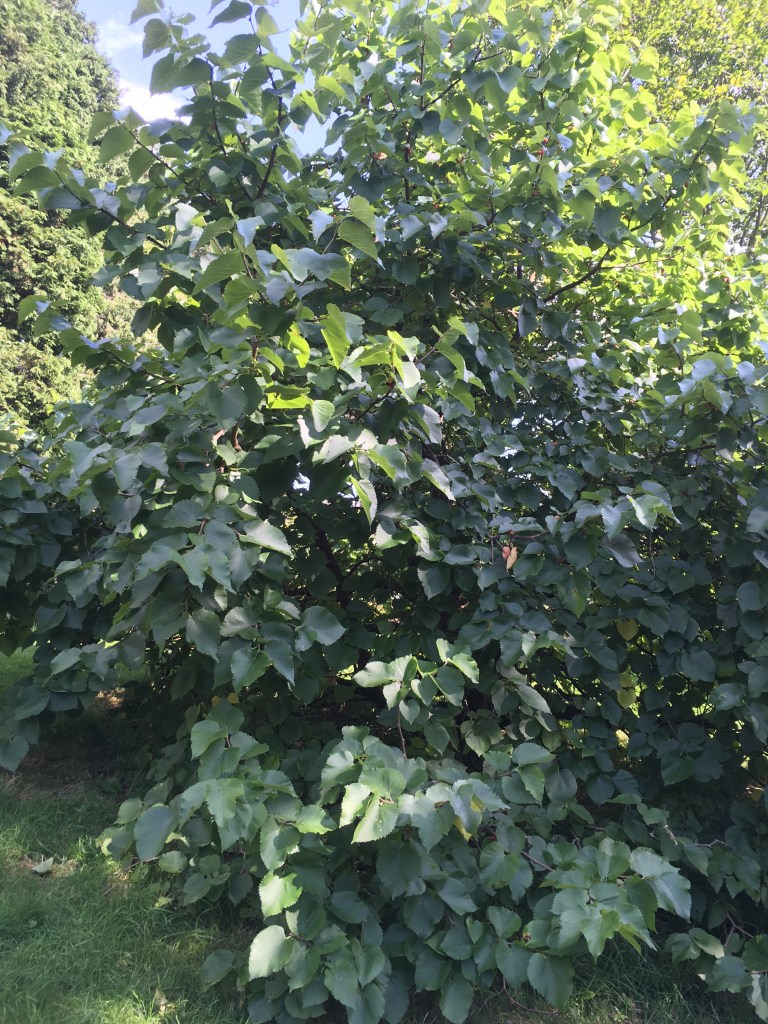
The large tree in Birmingham Botanical Gardens
Raspberries and blackberries grow on 2 year old canes so you need to allow the canes to grow in the first year without letting them shade out the fruiting canes. Then the canes that have fruited need to be pruned after harvest has finished. With mulberries you can just let them grow. Pruning is only required to keep its shape or to remove dead or diseased wood.
A typical tree can get very large, so if you have a small garden like we do then I would suggest a dwarf variety. The Charlotte Russe is a good one as it fruits after a year, unlike full size mulberries which can take around 8 years after planting before producing fruit. The dwarf ones do well in pots. They arrived in April 2018 and by June 2018 their branches had grown a little already. In early 2019 we repotted, one into a larger pot and one into a much larger old water tank. That year we had our first taste of mulberries. There wasn’t much difference in the size of harvest of the 2 pots. There were about 20-30 fruit on each. This year you can see a clear difference in the size of the plant and there are more fruit on the bush in the larger water tank.

2 months after receiving it 
I had originally underplanted one pot with salad and herbs 
The one in a smaller pot, catching the little one grazing. 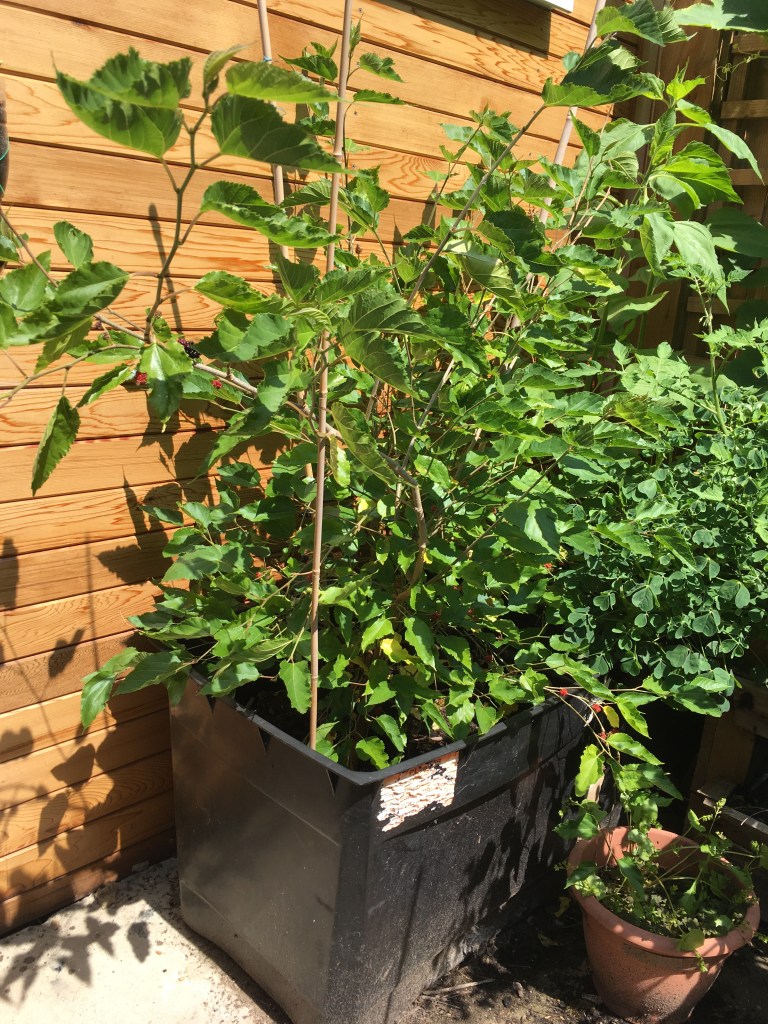
The larger one in the water tank
The branches of mulberries can be a little delicate so some protection from strong winds will be beneficial. However, mulberries can be late frost tolerant. This year the young leaves had started to form (it is deciduous) when a couple of cold nights hit. The developed young leaved did die back, but then it had new growth and recovered fine. When a similar thing happened to our one of our grapes, the whole vine died.

About a third of this growth died, but it recovered 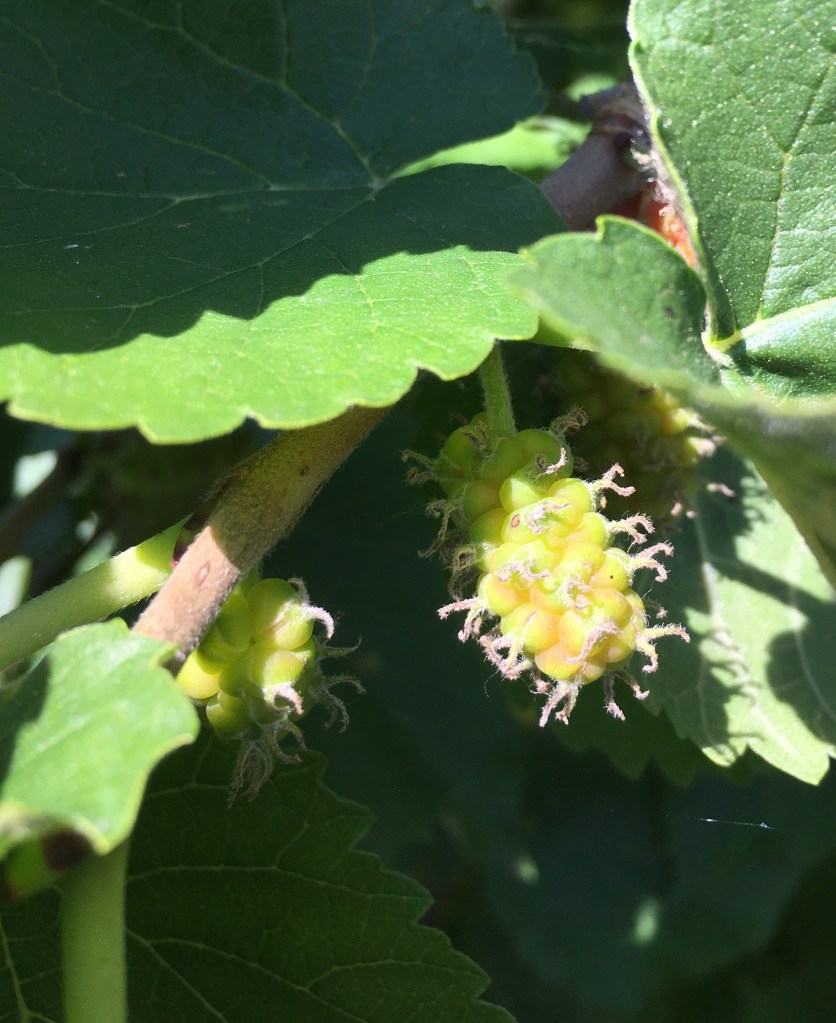
The flower
Mulberries, as far as I can tell are wind pollinated.
How to harvest
The ripe berries come off the branches easily with a little stalk attached. This stalk is also edible. If it is underripe it won’t come away easily. However, if left too long the berries become dull and dried.

All the ones on the bigger bush she couldn’t reach.
What actually happens in this house is little one goes into the garden and picks fruit straight off the tree and eats it. Our dwarf bush produces plenty of berries within an infant’s reach. She struggles a little with the larger bush. With lockdown she has been out there every day grazing. There isn’t a huge glut of berries produced at once. It’s hard to tell with the little marauder, but I think there have been about half a dozen ripe mulberries (between the 2 bushes) a day since the beginning of June. This was about 3 weeks earlier than last year and may be due to the early hot weather. There are still plenty of unripe berries, and even a few flowers, on the bush so I guestimate that they will continue to produce for another couple of weeks at least.

There are hundred of clusters like these on the park bush
There is a red mulberry bush in a local park. I have only noticed the ripe fruit on it this week and there are hundreds of unripe berries, but it’s hard to know about fruit in public spaces. I may not have seen any ripe berries yet because there may be someone removing them before I spy them.
I have read that if you have a very large tree then an easy way to harvest is to spread a large sheet underneath it and shake down the ripe ones to collect in the cloth.
How they taste
I’m afraid I can’t account for how all mulberries taste. This is part of the joy of growing them. I have never been able to find fresh mulberries elsewhere. The first mulberries I had seen were on a mulberry tree in the Botanical gardens in Birmingham, but they weren’t ripe at the time.
Our Charlotte Russe variety tastes like a bit like a grape crossed with a blackberry, but without the blackberry pips. There is a definite mild mulberry taste that I’ve also tasted with dried white mulberries. The dried mulberries are sweeter and remind me of raisins crossed with that mulberry taste.
The red mulberries in the park are almost twice the size of ours and taste a little less sweet than our black ones, but have a stronger flavour.

The bush in the park 
Its red berries
It’s like all fruit. There can be variation within varieties.
The leaves from our black mulberry, when stir fried in a little oil with a pinch of salt, remind me of dried, crispy seaweed. Not the fake seaweed made of cabbage, but the seasoned stuff that is like the nori used in sushi. I wouldn’t eat this as a bulk vegetable, maybe more as a snack or pretty side dish. I also don’t like to eat many of the leaves as I think this would affect berry production. The leaves are a bit tough. I’d like to try white mulberries leaves one day to see how they compare. They are, however, one of the few edible leaves in the garden in the hungry gap that aren’t brassicas. Pick the youngish leaves, but leave the shooting ends alone.

The younger glossier leaves, getting duller as you look right 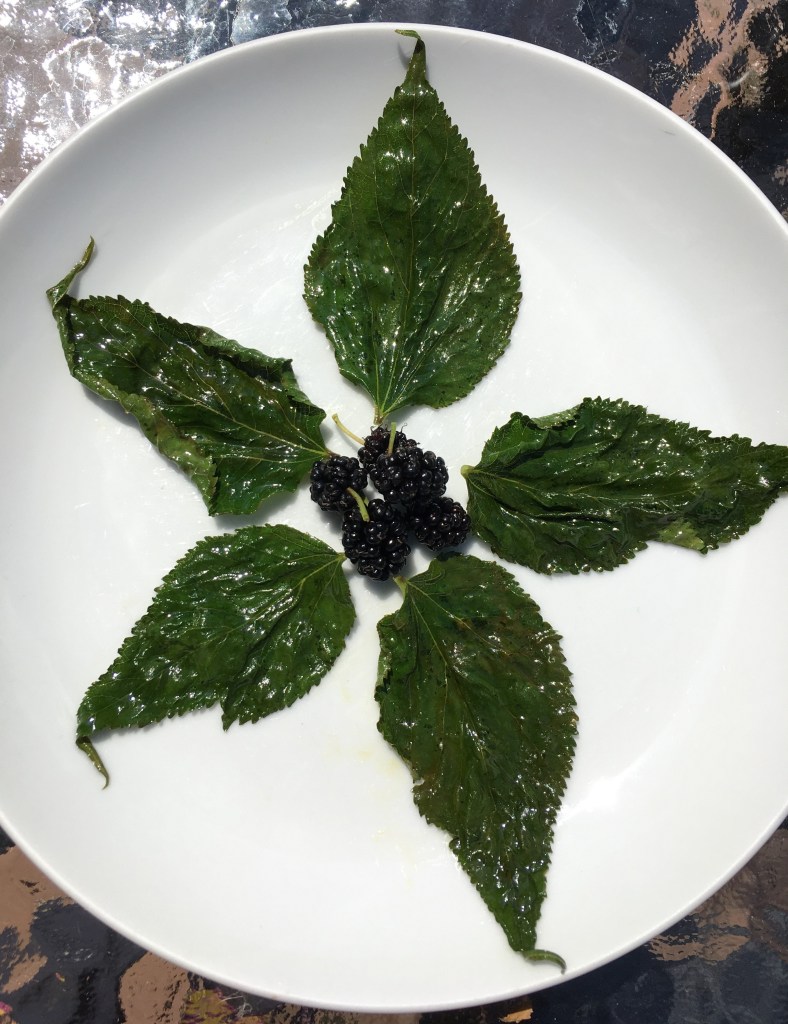
Warning
I have read that the milky white sap can be mildly toxic to humans, causing stomach upsets or skin irritations. I think the effects vary wildly for different cultivars. Little one plays with our tree constantly and has not had any problems. We have also eaten the leaves with no concerns.
